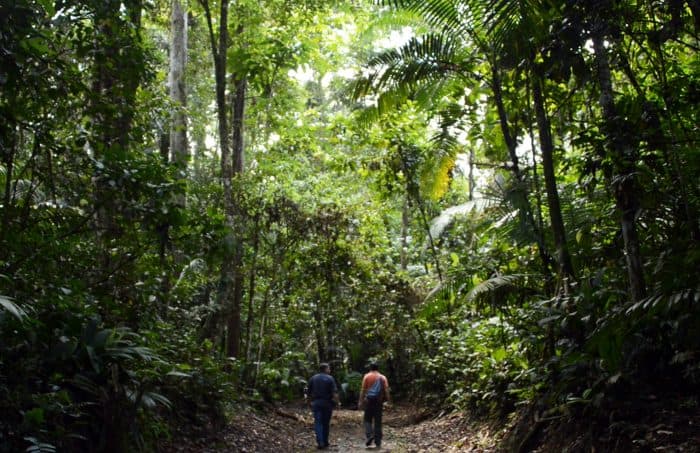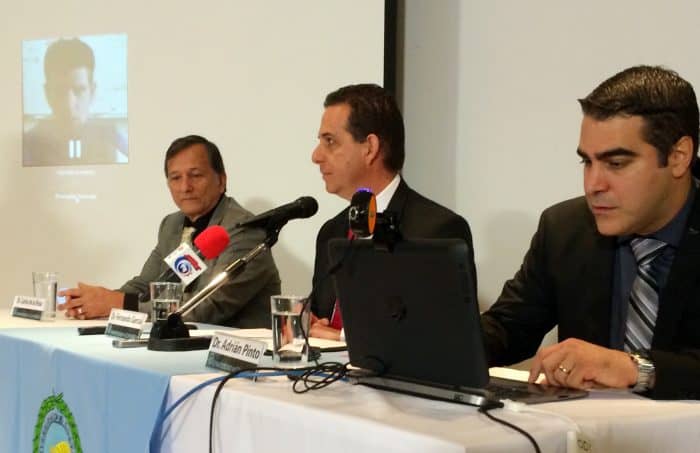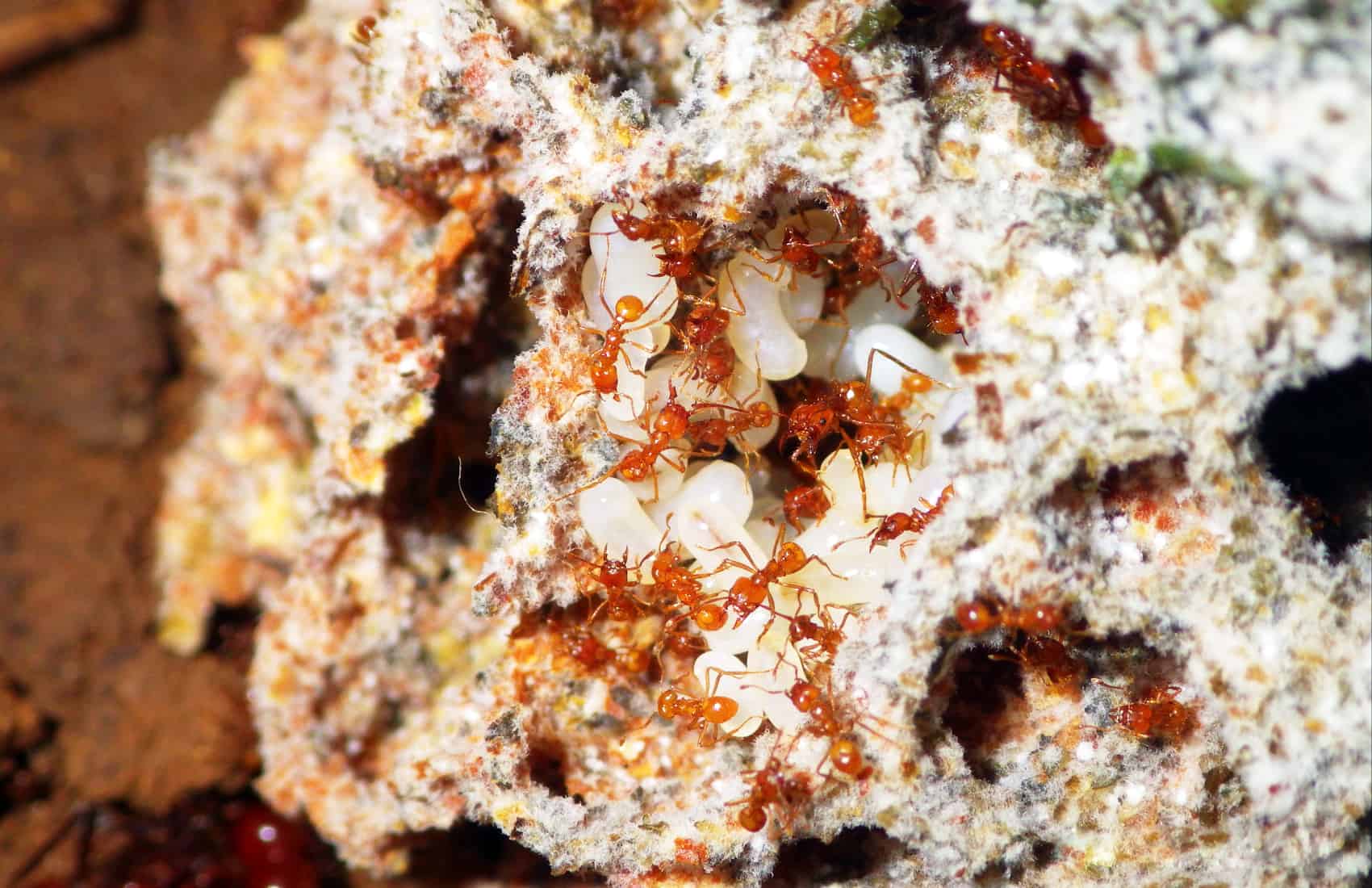An international team of researchers from the University of Costa Rica (UCR), Harvard University and University of Wisconsin-Madison announced the discovery of a molecule produced by Costa Rican ants that they believe could be used to manufacture a new improved antibiotic.
At a press conference at the UCR campus on Friday, Harvard researchers Jon Clardy and Ethan Van Harmam, as well as Cameron Currie of Wisconsin-Madison, joined UCR researchers via videoconference to disclose the details of the discovery of Selvamicin, as the group called an antibiotic found in bacteria harbored by fungus-growing ants.
Selvamicin, researchers found, has the ability to inhibit growth and even kill a human fungal patogen called Candida albicans. A candida, commonly known as yeast, is a strain of fungus that can cause infections.
These infections are responsible for digestive problems such as constipation or diarrhea, abdominal pain, intestinal gas or food intolerance. They can also provoke insomnia, memory loss, headaches and depression, among other ailments.
Researchers named the molecule in honor of the place where they discovered it: La Selva Biological Station, part of the Organization for Tropical Studies. The research center, located in the province of Heredia, receives some 300 investigators each year from several countries who conduct up to 150 scientific projects.
The research group already patented their findings. If the project concludes with a commercially distributed antibiotic, recognition and a share of the profits will be distributed equally among the three universities.
Investigating ants
UCR researcher Adrián Pinto said that scientists started studying ants at La Selva Biological Station in 2009, particularly the Apterostigma ants that cultivate and feed on a genus of fungus known as Leucoagaricus.
A parasitic micro fungus called Escovopsis also feeds from the Leucoagaricus, and invades ant colonies in search of it. The ants protect their food from the parasitic fungus by feeding an antibiotic-secreting bacteria that kills the invaders.
Apterostigma ants have therefore created a complex symbiotic relationship with the bacteria by providing them with a suitable environment to live. In return, ants benefit from the substance the bacteria secretes, which is an efficient antifungal. Professor Currie, an expert on evolution, discovered the interaction between ants and bacteria back in the 90s.
“These ants are farmers, as they grow their own food, but also pharmacists, as they manufacture their own antibiotics through their relationship with bacteria,” Pinto said.
Local research comprised the first stage of the project. UCR experts identified the ants’ habitat, collected bacteria samples and cultivated them at their laboratories. They then selected the best samples, tested the Selvamicin on various types of fungi and found that it is effective in killing those fungi.
Selected samples then were sent to Wisconsin for genetic analysis and also to Harvard for chemical analysis. Experts there are currently working on the possible development of a new drug.
See a video of the Ticos’ research at La Selva Biological Station:
Effective antibiotic
Among the fungi that Selvamicin can kill are two species that cause health problems for humans.
One of them is responsible for candidiasis, a fungal infection that commonly affects the skin, mouth, vagina, intestines and other organs. The other is a mold responsible for aspergillosis that causes allergic reactions and infections in lungs and other organs.
Research found that Selvamicin’s structure is similar to that of other antifungals called Nystatin A and Amphotericin B. Both are listed as essential medicines by the World Health Organization, but they might produce severe side effects to patients, so scientists have been looking for alternatives.
Pinto told The Tico Times that research is still at an early stage, so it is not certain that Selvamicin will soon evolve into a commercial product.
Researchers, however, are optimistic based on their findings that in addition to being highly efficient against fungus, Selvamicin has very low toxicity. This means that if Selvamicin becomes an authorized antibiotic, “its use, unlike most antibiotics, will have little to no side effects,” Pinto said.
Ethan Van Arnam described Selvamicin as a fascinating molecule and said that Harvard Medical School researchers are particularly interested in its unusual structure and its fungicidal properties.
He said the discovery is also a reminder of Costa Rica’s high ecological value, and how the country’s tropical forests still have many lessons to teach us about medicine and science.

Fighting bacteria
These discoveries about Selvamicin are key at a time when the number of antibiotic-resistant bacteria shows sustained growth while, by contrast, the discovery of new antibacterial agents is decreasing, researchers said.
Pinto highlighted that fungal-farming ants have used antibiotics against parasitic fungi for over 50 million years, and fungi have failed to become resistant to them as it occurs inside the human body.
He said that they are now focusing on understanding how ants have been using the same antibiotic against fungi over millions of years and it still works, “while there are already bacteria that are resistant to antibiotics we started using less than 70 years ago during World War II,” he said.
Harvard’s Clardy, a biological chemistry and molecular pharmacology expert, noted that there’s still much research pending.
The group of scientists will keep conducting tests to assess whether Selvamicin can become a drug to help people, “but this is a process that we already started,” Clardy said.
Carlos de la Rosa, the director of La Selva Biological Station, said the discovery has huge potential, but it’s important for people to understand that the process to develop a new drug is slow. In order to develop a final product, researchers still need to conduct many tests to prove that they can synthesize the antibiotic into a drug, de la Rosa told The Tico Times. Then that drug also must undergo laboratory tests, cultivation and effectiveness evaluations “to determine whether it is as effective in animals and humans as it is against fungi at an ant colony,” he said.
However, de la Rosa noted that these discoveries could also open the door to further research of the properties of millions of existing bacteria, and that might lead to the development of other new drugs.
“We know a lot about mammals, birds and reptiles, but we still know so little about microorganisms,” he said.








